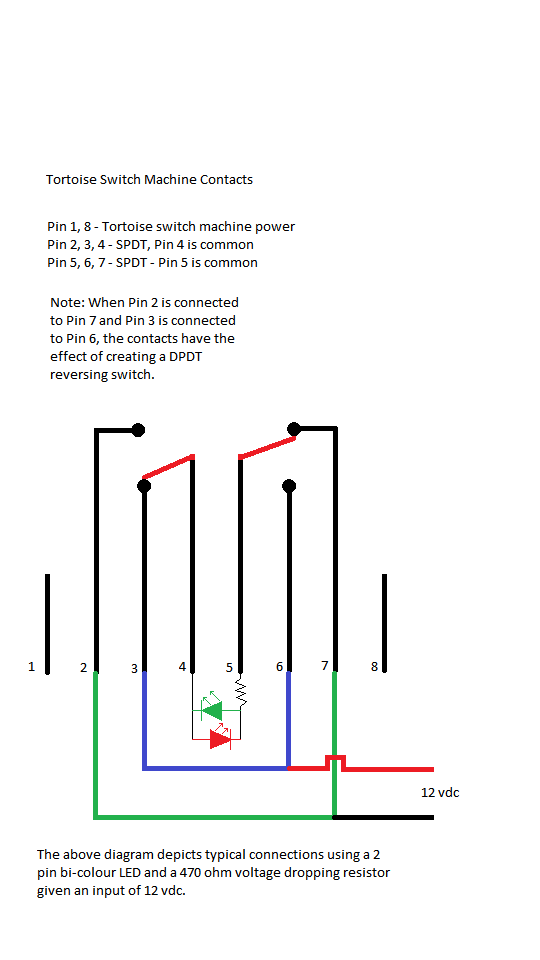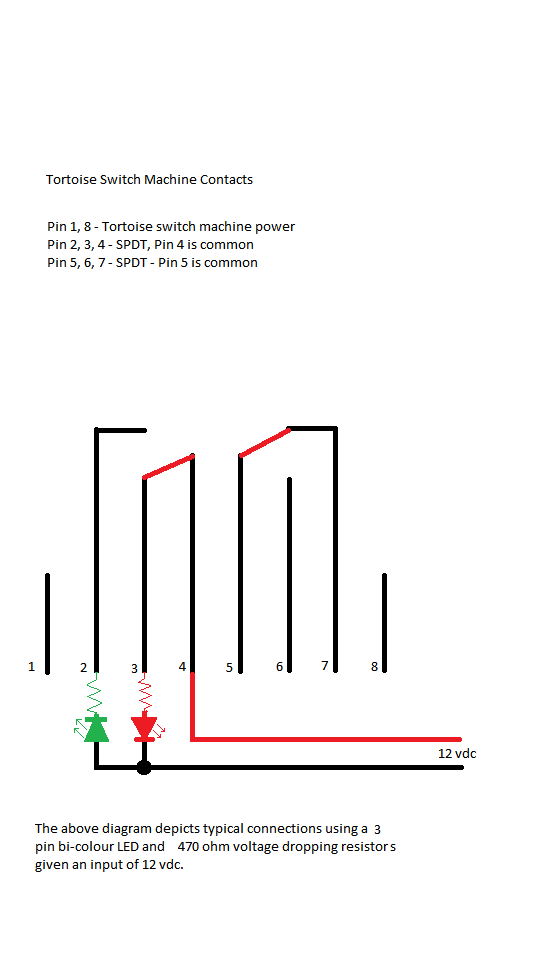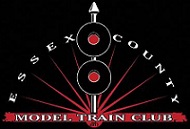LED‘s are useful and handy quick visual references for a specific condition. This page will discuss their usefulness for the indication of turnout position and how to connect them using contacts on a tortoise switch machine. Please note that their use is not limited to a tortoise – they can also be connected to the contacts on other devices used to throw and close turnouts such as Blue Point manual switch machines and twin coil switch machines.
It should be noted that typically, LED’s are relatively low voltage electronic devices and as such require the use of dropping resistor‘s (voltage reducing devices) to protect the LED’s from an over voltage condition.
The colour of the LED’s we use are typically either red/green or green/yellow. Colour has no direct bearing on connectivity. The LED’s will have either 2 or 3 pins. Using the 2 pin type will give a colour when a “forward” voltage is applied and the opposite colour when a “reverse” voltage is applied. The 3 pin type have a common lead. To change colours with this type of LED, the voltage is applied to one or the other of the 2 remaining pins.
The diagram below shows the contacts on the bottom of a tortoise switch machine. This will be the basis from which we will show how to connect 2 and 3 pin LED’s for the purpose of turnout position indication.

The letters SPDT in the diagram above refer to a type of electrical switch. Wikipedia goes into a level of detail here that is well beyond the scope of our purpose and intent.
The following 2 diagrams shows the connections required for each of the 2 and 3 pin types of LED’s respectively. In both cases, we typically use green to show the turnout in the “closed” or “normal” position (in effect straight through) and red or yellow to show the turnout in the “thrown” or “reverse” position (lined for the diverging route).


We hope this has been informative and helpful. Should you have questions (or corrections!), please contact us through the use of the Contact drop down elsewhere in our website.
